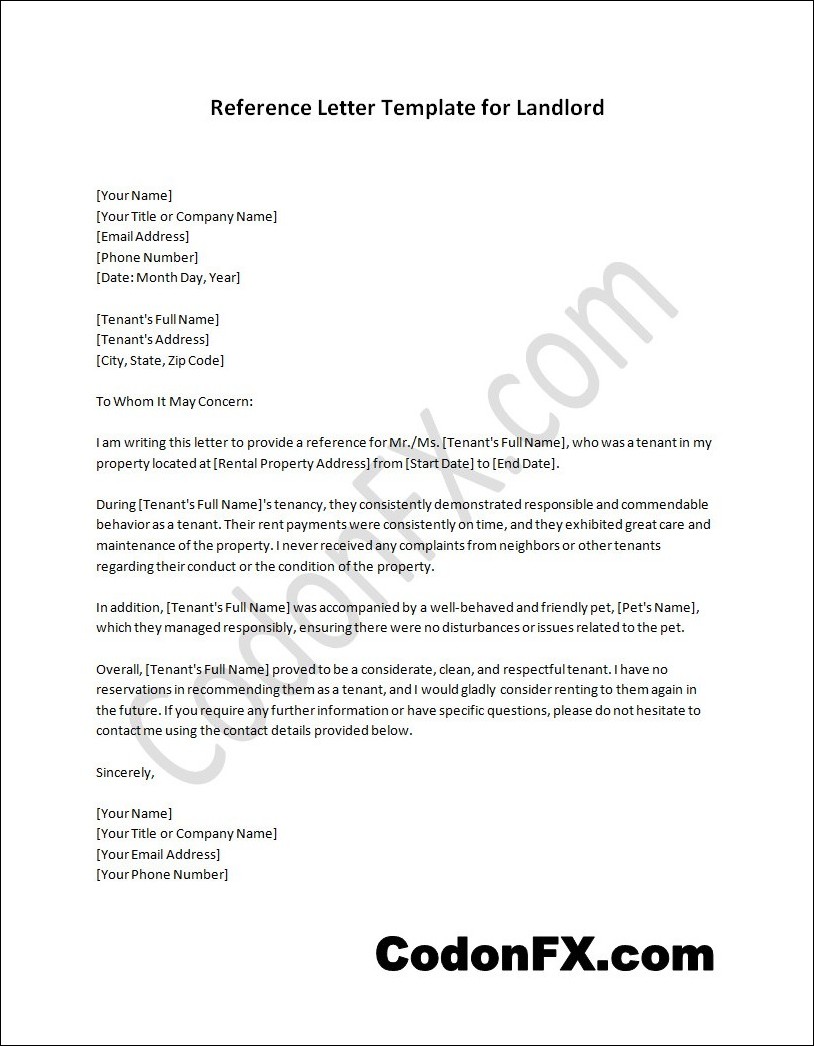
What is a landlord reference letter? What is the purpose?
A landlord reference letter is a document that is typically written by a previous landlord or property manager on behalf of a tenant. This letter can be requested by potential landlords or property managers as part of the tenant screening process.
When requesting a landlord reference letter, it is important for tenants to maintain a positive relationship with their current or previous landlord. By being courteous, paying rent on time, and taking care of the property, tenants increase their chances of receiving a favorable reference letter.
Furthermore, it is crucial for landlords to provide accurate and honest information in the reference letter to ensure the integrity of the tenant screening process. With a well-written and informative landlord reference letter, both tenants and landlords can benefit from a transparent and reliable rental experience.
Why landlord reference letters are important?
There are several reasons why landlord reference letters are important:
- Verifying tenant’s rental history: Landlord reference letters provide crucial information about a tenant’s rental history. They include details such as the duration of the tenancy, the rent amount, and whether the tenant paid rent on time. This information helps landlords evaluate the tenant’s past behavior and determine if they are likely to be responsible and reliable.
- Evaluating tenant’s behavior: Landlord reference letters also provide insights into a tenant’s behavior during their previous tenancies. They may include information about the tenant’s cleanliness, respect for property, and relationships with neighbors. This allows landlords to assess whether the tenant is likely to be respectful of the property and adhere to any rules or regulations.
- Assessing financial stability: Another important aspect covered in landlord reference letters is the tenant’s financial stability. Landlords can verify if the tenant consistently paid rent on time and in full, indicating their ability to meet their financial obligations. This helps landlords ensure that they are selecting tenants who are financially capable of fulfilling their rent payments throughout the tenancy.
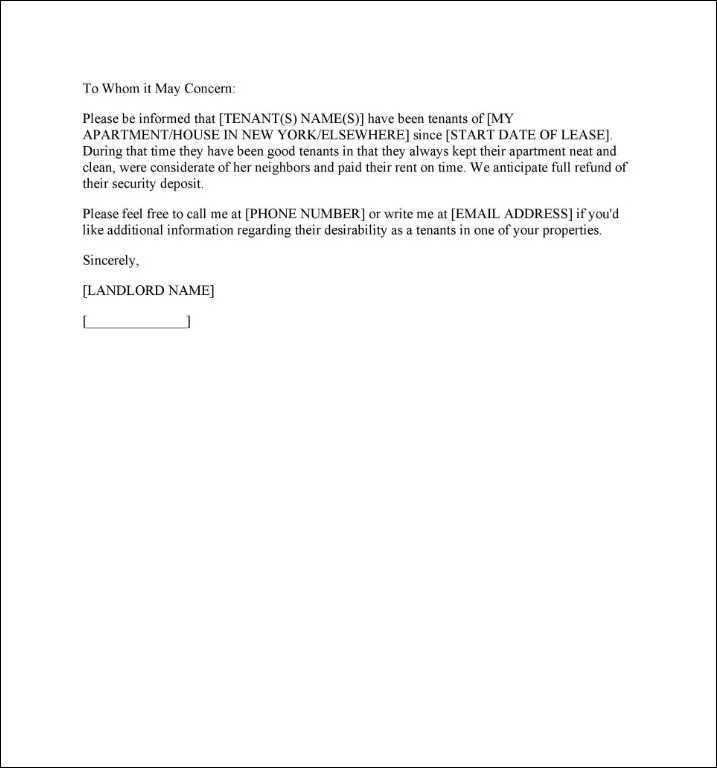
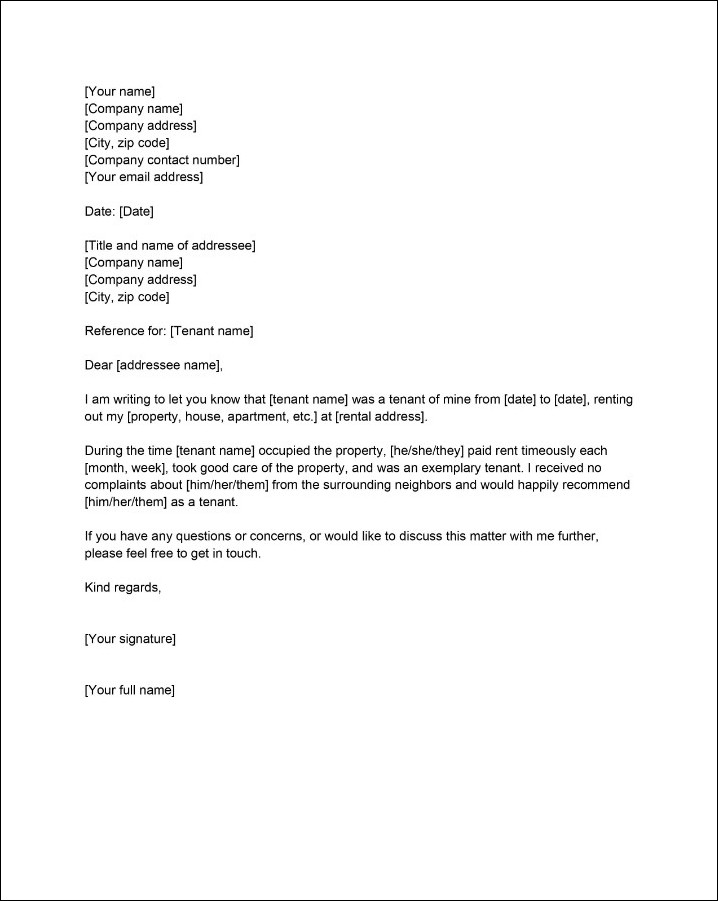
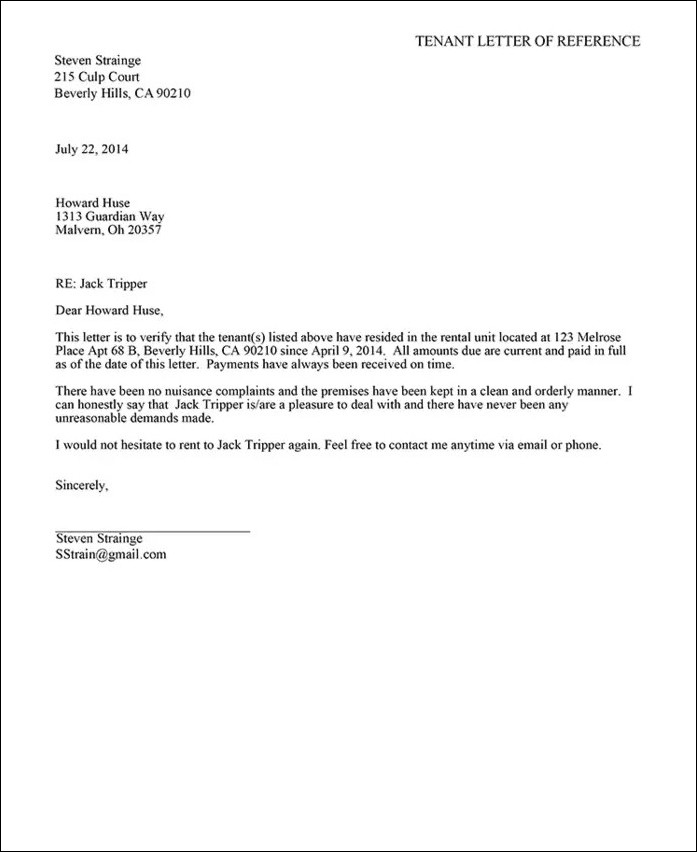
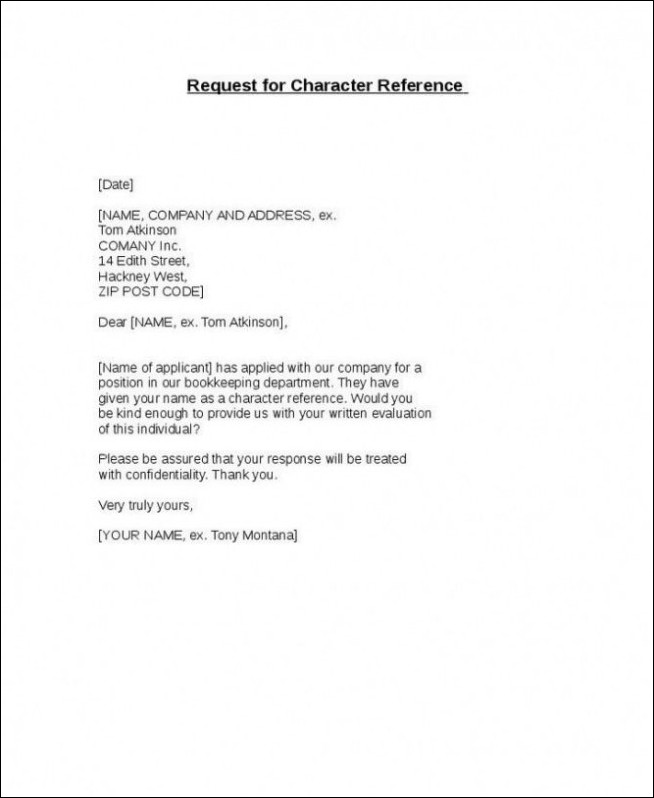
What Should I include in a landlord reference letter?
Here are the key items that should be included in a landlord reference letter:
- Tenant’s information: Start the letter by stating the tenant’s full name, current address, and the duration of their tenancy. This information is crucial for the reader to identify the tenant and their rental history.
- Payment history: Include details about the tenant’s rent payment history, such as whether they paid on time, any late payments, or any outstanding balances. This will provide insight into the tenant’s financial responsibility.
- Lease terms: Mention the duration of the lease and whether the tenant fulfilled the terms and conditions outlined in the lease agreement. This may include maintaining the property, adhering to noise regulations, or any other specific obligations.
- Property condition: Describe the condition of the property during the tenant’s occupancy. Highlight any damages caused by the tenant, if any, and whether they promptly reported maintenance issues.
- Character and behavior: Provide an assessment of the tenant’s character and behavior. Mention if they were respectful to neighbors, followed community rules, and were considerate towards other tenants.
Including all these details in a landlord reference letter will help potential landlords make informed decisions about prospective tenants. It is crucial to be honest and objective while providing accurate information to maintain the credibility of the letter.
How to Write a Landlord Reference Letter for a Tenant
To effectively write a landlord reference letter, consider the following steps:
- Gather necessary information: Before writing the letter, collect important details about the tenant. This includes their full name, the address of the property they rented from you, the duration of their tenancy, and their rental payment history. Having this information readily available will ensure the accuracy of the letter.
- Start with a formal salutation: Begin the letter with a formal salutation, addressing it to the potential landlord or property manager. Use their full name and title to maintain a professional tone throughout the letter.
- Introduce yourself: In the opening paragraph, briefly introduce yourself as the landlord and mention the length of time the tenant rented from you. Include any positive experiences or notable qualities about the tenant during their tenancy.
- Highlight the tenant’s qualities: In the body of the letter, emphasize the tenant’s positive qualities and characteristics. Mention their punctuality in paying rent, cleanliness, and maintenance of the property, and any positive interactions with neighbors or the community.
- Provide specific examples: To strengthen the reference letter, include specific examples or incidents that demonstrate the tenant’s reliability and responsible behavior. This could include instances where they promptly reported maintenance issues or resolved conflicts with neighbors amicably.
- Conclude with a recommendation: In the final paragraph, summarize the tenant’s strengths and conclude the letter with a strong recommendation. Express your confidence in their ability to be a reliable and responsible tenant for the potential landlord.
- End with contact information: Include your contact information at the end of the letter, such as your phone number and email address. This allows the potential landlord to reach out to you for any further inquiries or clarifications.
By following these steps and including relevant information about the tenant’s rental history, you can help them secure a new rental property with a strong and convincing recommendation.
Reference Letter Template for Landlord | Word – Download